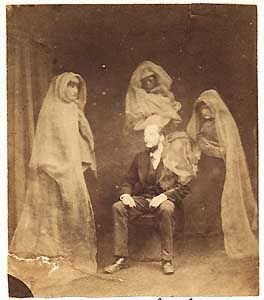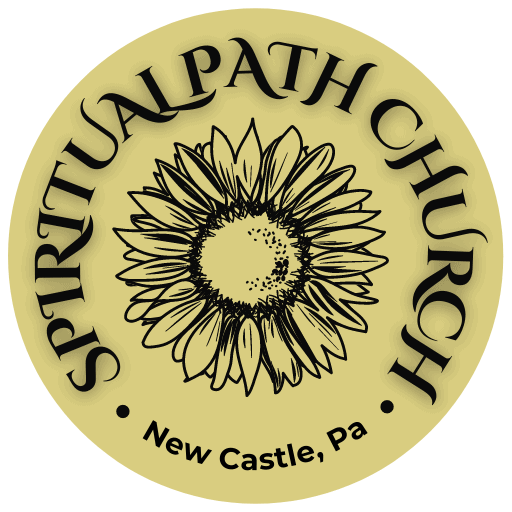Thomas Slater was an optical instrument maker in London in the 1840s who, among other things, helped build telescopes. He also had an interest in spiritualism and held meetings at his house. Some of those meetings included Mr. Robert Owen and Lord Brougham. Mr. Owen remarked that when he died, he would return and appear in spirit photographs. After Owen’s death, Slater tried his hand at spirit photography and indeed produced a photo with the likeness of Mr. Owen.
Trying to prove to skeptics that spirit photographs were more than illusions produced during the developing process, he decided to study the phenomena. He wrote of his experiences producing photographs with Mr. Fredrick A. Hudson.
At first the two began with normal photography. “He took a negative of me, and it turned out to be a very good one, namely, a clear, sharp negative—nothing more,” Slater said. A second photograph was taken with an old plate that had been cleaned. Nothing appeared on that plate when it was developed. During the third attempt, Slater thought of his dead mother while the photograph was taken. “On the plate is a fine female figure, draped in white standing before me with her hand resting on my head,” Slater said. “The drapery nearly covers the whole of my body, leaving only the side of the head and one hand visible. I am certain Mr. Hudson played no tricks on this occasion.”
Skeptics suggested that the trickery might occur within the camera itself. To disprove that, Mr. Slater made “a new combination of lenses, and took a new camera and several glass plates” to Mr. Hudson’s studio. They focused the new camera on a sitter and produced a “fine spirit-picture.” This was repeated with another sitter, and with similar success.
Mr. Slater stated , “Collusion or trickery was altogether out of the question.”
, “Collusion or trickery was altogether out of the question.”
Mr. Slater carried on with a further experiment. He created a camera with dark lenses. “The color of the glass was such as only in the strongest light you can see the sitter at all.”
“And no one was more astonished than Mr. Hudson, after seeing me focus the instrument to a lady sitting in the chair, to find not only a sharp, well-defined negative with good half-tone, but also that standing by the lady was a fine spirit-figure, draped in black and white,” Mr. Slater said.
He asked skeptics to explain why they were able to take portraits of persons through instruments that excluded so much light that the sitter was scarcely visible. At the same time, the spirits were impressed vividly upon the photographic plates. He said, “I am now carrying on experiments upon this part of the spectrum, and am convinced that much may and will be discovered that is useful in photography by making use of invisible light.”
References:
A BRIEF HISTORY OF SPIRIT PHOTOGRAPHY, A Resume, in Three Parts, of the Efforts Made to Obtain Photographs of Departed Persons by Experimenters in Great Britain, the United States, and France. By J. J. MORSE
The History of Spiritualism, Vol. II, Chapter 5, by Sir Arthur Conan Doyle.
The Spiritualist, Nov 1, 1873. “Miracles and Modern Spiritualism,” 1901, p 198
